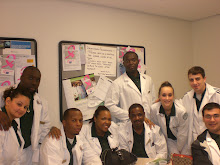
What is fluoroscopy?
Fluoroscopy is a study of moving body structures - similar to an x-ray "movie." A continuous x-ray beam is passed through the body part being examined, and is transmitted to a TV-like monitor so that the body part and its motion can be seen in detail.
Fluoroscopy, as an imaging tool, enables physicians to look at many body systems, including the skeletal, digestive, urinary, respiratory, and reproductive systems. Fluoroscopy may be performed to evaluate specific areas of the body, including the bones, muscles, and joints, as well as solid organs such as the heart, lung, or kidneys.
Fluoroscopy is used in many types of examinations and procedures, such as barium x-rays, cardiac catheterization, arthrography (visualization of a joint or joints), lumbar puncture, placement of intravenous (IV) catheters (hollow tubes inserted into veins or arteries), intravenous pyelogram, hysterosalpingogram, and biop
Fluoroscopy may be used alone as a diagnostic procedure, or may be used in conjunction with other diagnostic or therapeutic media or procedures.
History of Fluoroscopy
The beginning of fluoroscopy can be traced back to 8 November 1895 when Wilhelm Röntgen noticed a bariumplatinocyanide screen fluorescing as a result of being exposed to what he would later call x-rays. Within months of this discovery, the first fluoroscopes were created. Early fluoroscopes were simply cardboard funnels, open at narrow end for the eyes of the observer, while the wide end was closed with a thin cardboard piece that had been coated on the inside with a layer of fluorescent metal salt. The fluoroscopic image obtained in this way is rather faint. Thomas Edison quickly discovered that calcium tungstate screens produced brighter images and is credited with designing and producing the first commercially available fluoroscope. In its infancy, many incorrectly predicted that the moving images from fluoroscopy would completely replace the still x-ray radiographs, but the superior diagnostic quality of the earlier radiographs prevented this from occurring. Due to the limited light produced from the fluorescent screens, early radiologists were required to sit in a darkened room, in which the procedure was to be performed, accustomizing their eyes to the dark and thereby increasing their sensitivity to the light. The placement of the radiologist behind the screen resulted in significant radiation doses to the radiologist. Red adaptation goggles were developed by Wilhelm Trendelenburg in 1916 to address the problem of dark adaptation of the eyes, previously studied by Antoine Beclere. The resulting red light from the goggles' filtration correctly sensitized the physician's eyes prior to the procedure while still allowing him to receive enough light to function normally.
The development of the X-ray image intensifier and the television camera in the 1950s revolutionized fluoroscopy. The red adaptation goggles became obsolete as image intensifiers allowed the light produced by the fluorescent screen to be amplified, allowing it to be seen even in a lighted room. The addition of the camera enabled viewing of the image on a monitor, allowing a radiologist to view the images in a separate room away from the risk of radiation exposure.
Risks
Because fluoroscopy involves the use of x rays, a form of ionizing radiation, all fluoroscopic procedures pose a potential health risk to the patient. Radiation doses to the patient depend greatly on the size
of the patient as well as length of the procedure, with typical skin dose rates quoted as 20-50
mGy/min. Exposure times vary depending on the procedure being performed, but procedure times up to 75 minutes have been documented. Because of the long length of some procedures, in addition to standard cancer-inducing stochastic radiation effects, deterministic radiation effects have also been observed ranging from mild erythema, equivalent of a sun burn,
to more serious burns.
A study has been performed by the Food and Drug Administration (FDA) entitled Radiation-induced Skin
Injuries from Fluoroscopywith an additional publication to minimize further fluoroscopy-induced injuries, Public Health Advisory on Avoidance of Serious X-Ray-Induced skin Inj
uries to Patients During Fluoroscopically-Guided Procedures.
While deterministic radiation effects are a possibility, radiation burns are not typical of standard fluoroscopic procedures. Most procedures sufficiently long in duration to produce radiation burns are part of necessary life-saving operations.
















